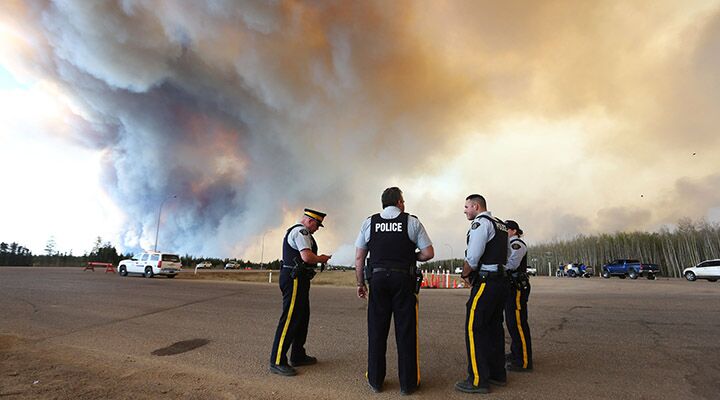
Canada Wildfire: Breaking the Country’s Economic Back
A forest fire developed near the Canadian oil town of Fort McMurray on May 1. Within a few days, it had engulfed entire neighborhoods and prompted a citywide evacuation of 80,000 people. After one week, the blaze had grown to cover some 770 square miles of land. More than 1,600 structures are believed to have been destroyed, and officials are now saying, “Unless we have a significant rain event of 100 millimeters of rain [approximately 4 inches], we expect to be out fighting the fire in the forested area for months to come.”
Because of its immense size, meteorologists say the fire is creating its own weather conditions, causing tremendous updrafts that launch embers and debris to areas around the inferno. It can even produce small lightning storms that can start smaller fires nearby.
Much speculation has risen about why such a fire was able to grow so rapidly. Peter Fuglem, director of the British Columbia Ministry of Forests and Range, stated, “Forest conditions are changing, in part due to climate change, but also as a result of (firefighting) practices, probably the largest of which has been interrupting the natural cycle of fires.” Forest fires are a natural part of the cycle of forests. Old trees are burned away so that new trees can grow in their place. But many believe these fires should be stopped immediately; doing so allows many arboreal areas to become dry and dead, a perfect condition for wildfires to spread out of control.
In the past few months, the province of Alberta has received very little rainfall. In April, Fort McMurray received only around three quarters of an inch of rain, leaving optimal conditions for a fire.
Fort McMurray is the hub city for Canada’s tar sands, Alberta’s primary supply of oil and the backbone of Alberta’s economy and arguably much of Canada’s as well. In recent years, Alberta has taken a repeated beating in its oil production. Starting in 2014, the international oil market and the price of oil drastically plummeted from the standard $90-$100 a barrel to below $30 a barrel in 2015. Iran’s recent return to the international oil market has contributed to this plummet. The slide has caused a net loss of 19,600 jobs across Alberta—and 40,000 jobs lost specifically in the oil industry.
Before the Fort McMurray fire, Canadian Prime Minister Justin Trudeau promised Alberta Premier Rachel Notley nearly $750 million in infrastructure funding and $250 million in emergency relief in an effort to help this vitally important industry. Now, with the fire decimating the area of Fort McMurray, insurance companies are looking at nearly $9 billion in losses, and with Premier Notley promising $1,250 handouts to all adult evacuees and $500 to every dependent, the provincial budget will take a big hit too. Analysts are now saying that 1.1 million barrels of oil have been eliminated from the 2.5 million barrels that are produced daily in the province, slashing production nearly in half. Amidst all of this, it is believed that the fire could double in size and may even push into Saskatchewan, Alberta’s neighboring province.
With mounting calamities in Alberta’s economy, the Fort McMurray fire couldn’t have come at a worse time or struck a worse target.
Canada’s economy is heavily reliant on the industries in Alberta, and the Fort McMurray fire represents a major nail in its coffin. God says these natural disasters are neither random nor man-made but are divinely orchestrated to wake the people of modern-day Israel to their need to repent. For more information on how God uses natural disasters, request our free booklet Why ‘Natural’ Disasters?
